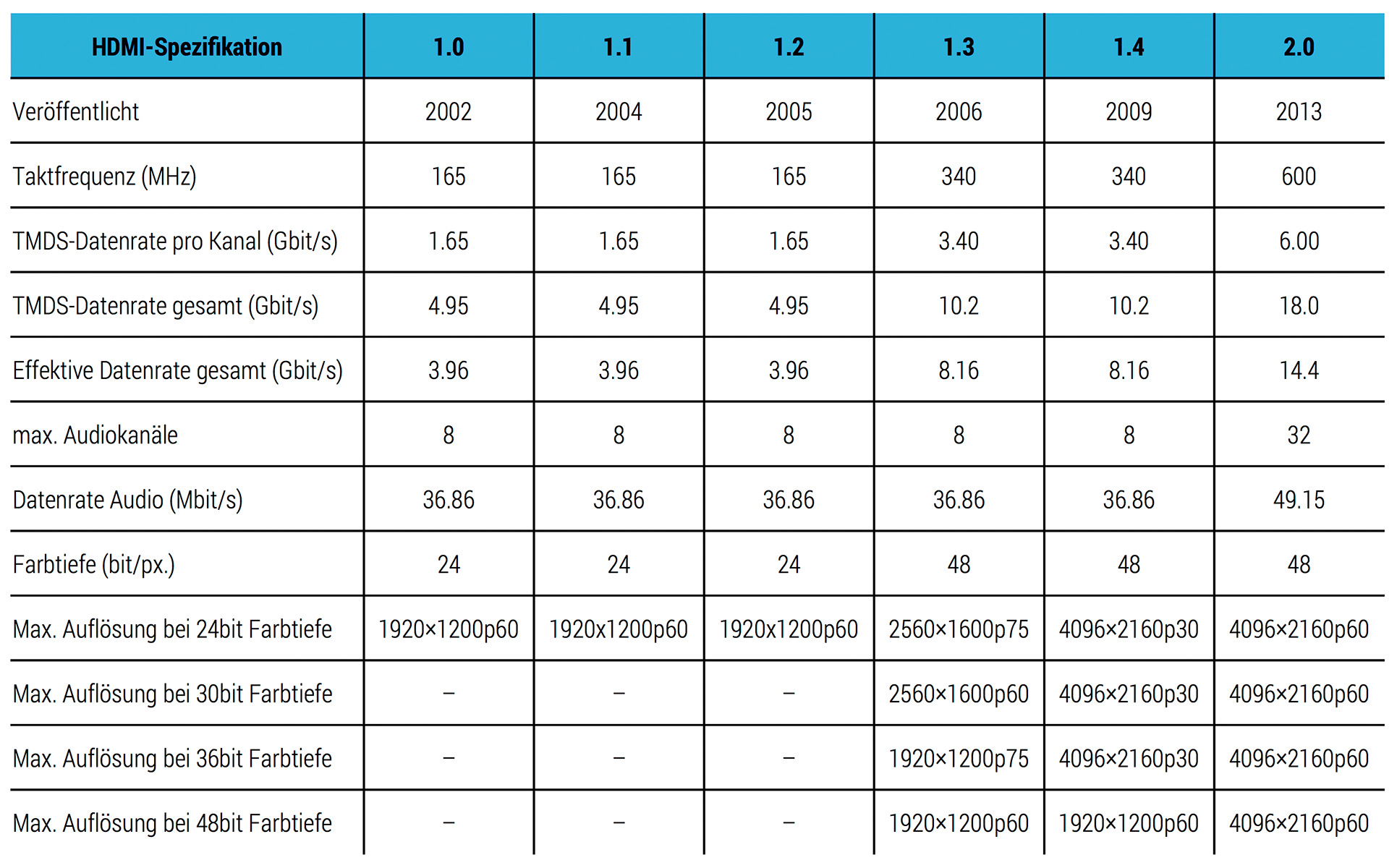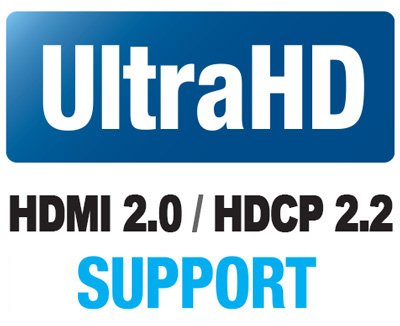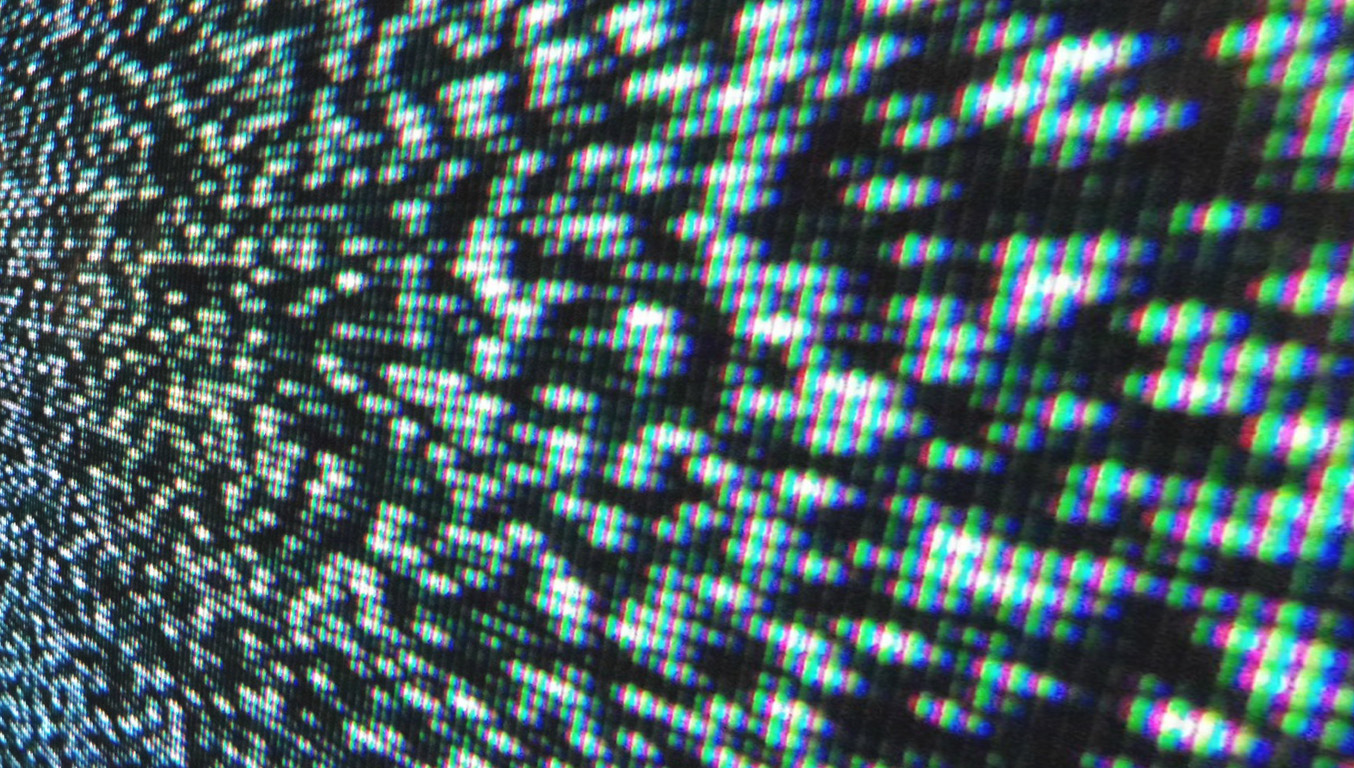

Long announced, urgently expected, finally available - but unfortunately the new HDMI 2.0 standard creates more problems than it solves. Televisions and projectors with 4K or UHD resolution will only be able to show their full potential when real, high-quality 4k content is available. Nobody really knows where these come from and how they will be made available in the future, but one thing seems certain: they will often be played from an external device, and an HDMI connection is required for this. The most recent HDMI specification 1.4 is already suitable for 4k material, but due to data rate restrictions, it is only designed for frame rates of up to 30 frames per second. Not least because of this, the manufacturers of TVs and AV receivers were desperately waiting for the adoption of the next HDMI 2.0 standard. This is now official and the first devices with HDMI 2.0 are available.
At first it all sounds wonderful: With an increase in the data throughput to 18 gigabits per second (HDMI 1.4: 10.2 Gbps), there is now enough bandwidth available for 4k images at 60 frames per second, and the possible color depth increases 12 bit or 70 million colors (HDMI 1.4: 8 bit or 16.7 million colors) and even 3D images in 4k resolution are now possible. At the same time, HDMI 2.0 can transmit up to 32 uncompressed audio channels and is therefore already prepared for new sound formats such as Dolby Atmos, DTS UHD or Auro 3D. And perhaps the best news: no new cables are required for HDMI 2.0! So everything could have turned out really, really good. But the HDMI forum has a reputation to lose in the end, and consequently, in this case too, a few things have been thought up that will turn a really good idea into a chaos for the mere mortal user. On the one hand, manufacturers have been given so much leeway in using the 2.0 specifications that not all HDMI 2.0 devices have to have the same range of performance and functions. On the other hand, the new version 2.2 of the digital copy protection HDCP has come up with a few more nasties. And to top it all, HDCP 2.2 is not even part of the HDMI 2.0 standard, so that any number of ambiguous combinations of the two technologies can be created. Confused? We also!

From the perspective of the rights holder, HDCP 2.2 has become necessary to effectively protect future 4k content from illegal copies, as all previous HDCP versions are considered cracked. HDCP 2.0 now uses new algorithms that are not backwards compatible with the older version. In the future, this may mean that the transmission of protected 4k content will be prevented if even a single device in the playback chain does not support HDCP 2.2. If you remember what problems the copy protection handshake has already caused in the past, you can still expect a lot here ...
So let's start all over again. TVs with a real HDMI 2.0 interface are currently rare. However, Sony and Toshiba, for example, promise a free software update for at least some of their 4k devices that nominally have HDMI 1.4. 2.0. That sounds like good news, and it would be if these products were really already built with HDMI chips that can handle the higher data rates. Unfortunately, it is also conceivable that the software update only reduces or limits the color depth or color resolution, because even then there would be enough bandwidth available for a 4k transmission at 60fps. Here you will have to wait until the update is actually available. Owners of the 85 incher from Sony or the noble projector VPL-VW1000ES have to be prepared for more effort anyway. Here, too, there should be an update, which is not limited to software, but also requires new hardware, which has to be replaced by Sony service. So far nothing is known about the prices for such updates, it will hardly be free. Samsung has relied on an external connection box for its UHD TVs right from the start. This at least makes future updates easier, but whether and in what amount the owners will incur costs remains to be seen. Numerous other TV manufacturers, including Sharp and LG, have not yet commented on the "Update to HDMI 2.0" issue.
And even when updates are made available or 'real' HDMI 2.0 devices appear on the market, you still have to look very carefully. Because the specification actually only refers to the maximum possible data throughput, but not to the supported functions. In other words, not everywhere that it says 'HDMI 2.0' is the same. In the last few weeks, various AV receivers have become available that, according to the technical data, already have HDMI 2.0, but caution is advised here too. On the one hand, in most cases only one HDMI input corresponds to the new specifications for cost reasons, the others are 'conventional' 1.4 variants. If you find yourself in the situation of wanting to connect several 4k sources in the future, you should buy a new receiver. On the other hand, there are other devices, for example from Onkyo, which are advertised with HDCP 2.2 and actually support the new copy protection. However, as far as we know today, they do not have HDMI 2.0 inputs, so they can only support future 4k sources to a limited extent. 
